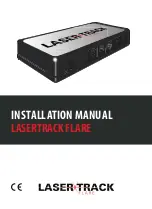
sidewall of the tire, even though these
regulations do not apply to Canada.
i
The actual values for tires are vehicle-
specific and may deviate from the values in
the illustration.
Where applicable, the tire grading
information can be found on the tire sidewall
between the tread shoulder and maximum
tire width.
For example:
Tread wear Traction Temperature
200
AA
A
All passenger car tires must conform to the
statutory safety requirements in addition to
these grades.
Tread wear
The tread wear grade is a comparative rating
based on the wear rate of the tire when tested
under controlled conditions on a specified
U.S. government course. For example, a tire
graded 150 would wear one and one-half
times as well on the government test track as
a tire graded 100.
The relative performance of tires depends
upon the actual conditions of their use,
however, and may depart significantly from
the norm, due to variations in driving habits,
service practices and differences in road
characteristics and climate conditions.
Traction
G
WARNING
The traction grade assigned to this tire is
based on straight-ahead braking traction
tests, and does not include acceleration,
cornering, hydroplaning, or peak traction
characteristics.
The traction grades, from highest to lowest,
are AA, A, B, and C. Those grades represent
the tire's ability to stop on a wet surface as
measured under controlled conditions on
specified government test surfaces of asphalt
and concrete. A tire marked C may have poor
traction performance.
G
WARNING
If ice has formed on the road, tire traction will
be substantially reduced. Under such weather
conditions, drive, steer and brake with
extreme caution.
The safe speed on a wet, snow covered or icy
road is always lower than on dry road
surfaces.
You should pay special attention to road
conditions when temperatures are around
freezing point.
Mercedes-Benz recommends a minimum tire
tread depth of
1
/
6
in (4 mm) for all four winter
tires (
Y
page 251) to maintain normal driving
characteristics in winter. Winter tires can
reduce the braking distance on snow-covered
surfaces in comparison with summer tires.
The braking distance is still much further than
on surfaces that are not icy or covered with
snow. Take appropriate care when driving.
!
Avoid wheelspin. This can lead to damage
to the drive train.
Temperature
G
WARNING
The temperature grade for this tire is
established for a tire that is properly inflated
and not overloaded. Excessive speed,
underinflation, or excessive loading, either
separately or in combination, can cause
excessive heat build-up and possible tire
failure.
The temperature grades are A (the highest),
B, and C. These represent the tire's
resistance to the generation of heat and its
ability to dissipate heat when tested under
controlled conditions on a specified indoor
262
Uniform Tire Quality Grading Standards
Wheels
and
tires
Содержание Coupe GT
Страница 4: ......
Страница 26: ...24 ...
Страница 36: ...34 ...
Страница 102: ...100 ...
Страница 112: ...110 ...
Страница 146: ...144 ...
Страница 147: ...Useful information 146 Important safety notes 146 Displays and operation 146 145 On board computer and displays ...
Страница 197: ...Useful information 196 Stowage areas 196 Features 198 195 Stowage and features ...
Страница 215: ...Useful information 214 Engine compartment 214 Maintenance 217 Care 219 213 Maintenance and care ...
Страница 286: ...284 ...
















































